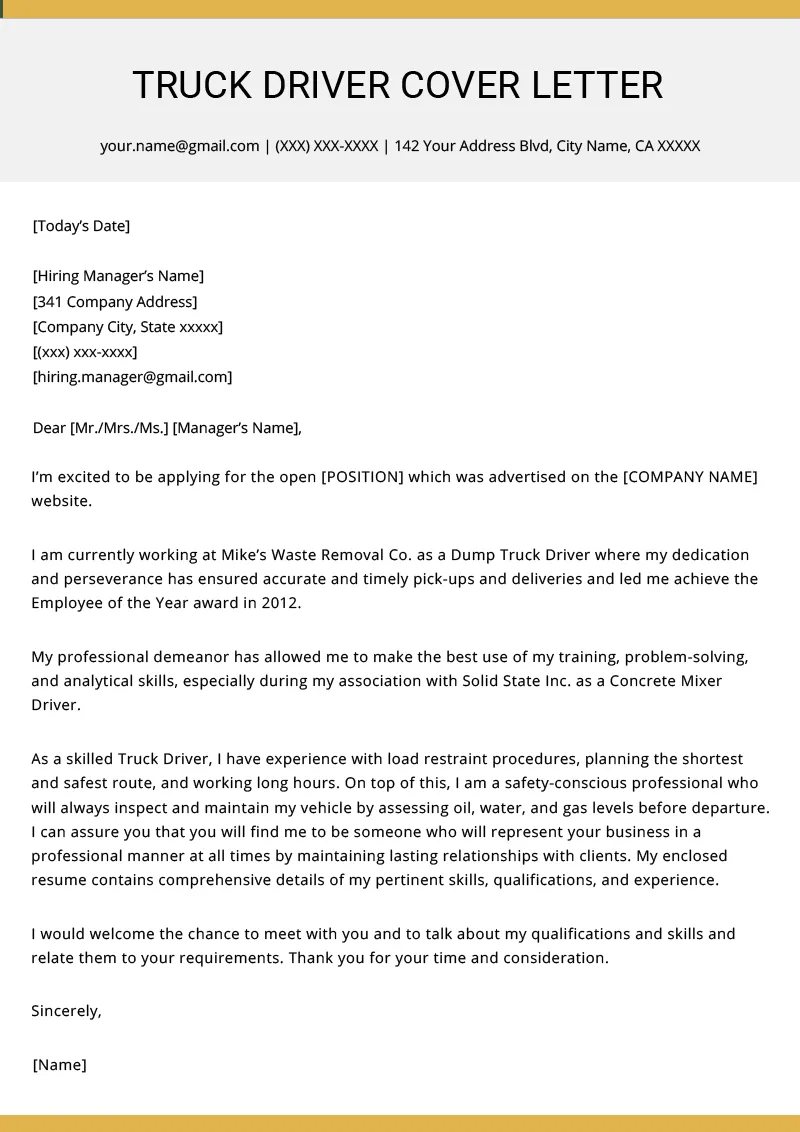Why a Truck Driver Cover Letter is Crucial
In the competitive world of truck driving, a well-crafted cover letter can be your key to unlocking new career opportunities. Many drivers underestimate the power of a cover letter, but it’s often the first impression you make on a potential employer. It’s your chance to showcase your skills, experience, and personality beyond what’s listed on your resume. This guide will walk you through the essential steps to create a compelling cover letter that grabs the hiring manager’s attention and increases your chances of landing your dream job. A strong cover letter can highlight your unique qualifications and demonstrate your genuine interest in the position, setting you apart from other applicants.
The Importance of a Cover Letter
A cover letter serves as a personal introduction, allowing you to elaborate on your qualifications and express your enthusiasm for the specific trucking job. Resumes provide a snapshot of your experience, but cover letters let you tell a story. It’s your opportunity to connect with the hiring manager on a personal level, demonstrating your communication skills and professional demeanor. The cover letter gives you space to explain any gaps in employment, career changes, or why you’re the perfect fit for the company. Without a cover letter, you’re missing a critical chance to make a lasting impression. This is why it is important to write a cover letter.
Making a Strong First Impression
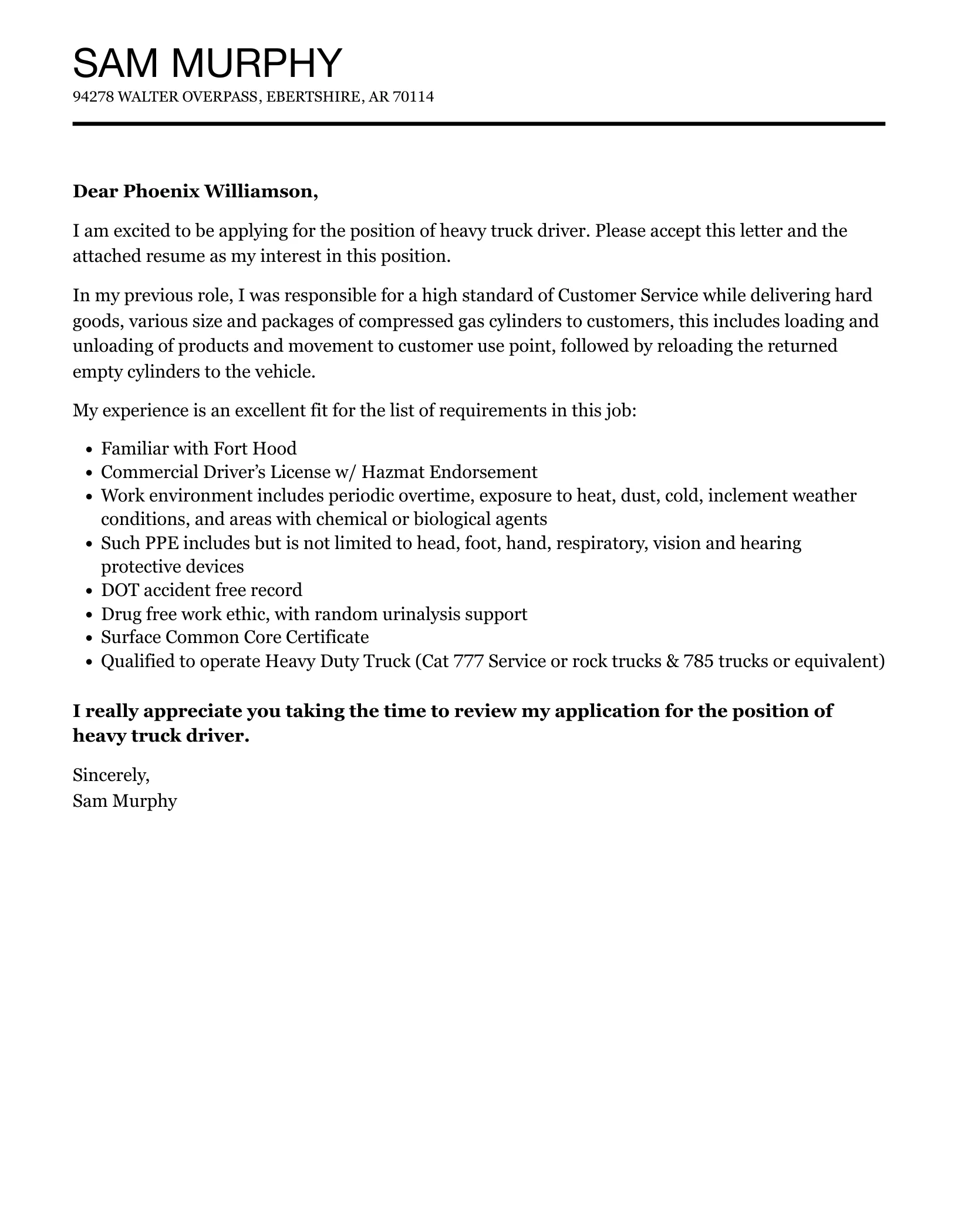
Your cover letter is the first thing a potential employer sees, and first impressions matter. A polished, professional cover letter signals attention to detail and a commitment to quality—qualities essential for a truck driver. It should be free of errors, easy to read, and tailored to the specific job. A well-written cover letter shows you’ve taken the time to understand the company’s needs and are genuinely interested in the position. The cover letter demonstrates your ability to communicate effectively, a critical skill in the trucking industry. This is a great way to land your next driving job.
Essential Elements of a Truck Driver Cover Letter
Contact Information Section
Start with your contact information at the top, including your name, phone number, email address, and mailing address. This ensures the hiring manager can easily reach you. Ensure your email address is professional; avoid using nicknames or unprofessional phrases. Check that your phone number is correct and your voicemail is set up with a professional greeting. Your address allows the company to send physical mail. Always double-check this information before submitting the letter.
The Hiring Manager’s Details
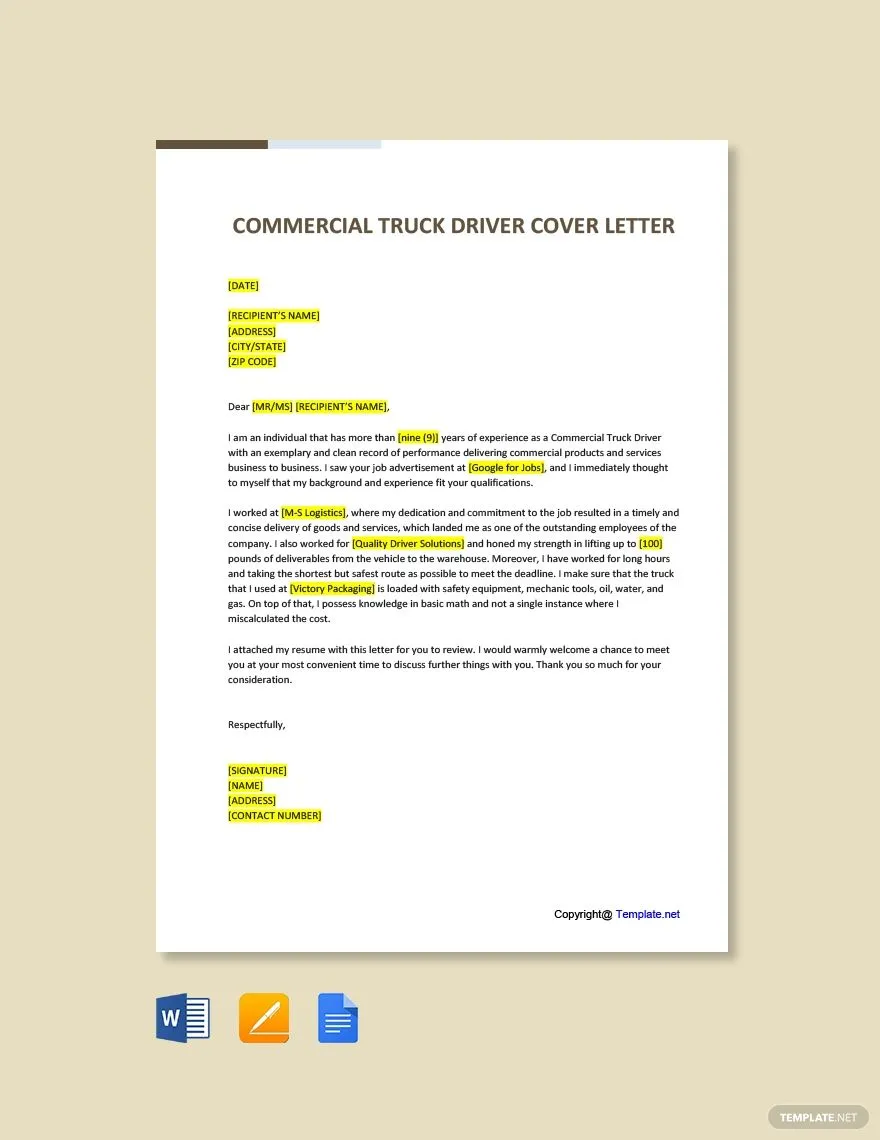
If possible, address your cover letter to the hiring manager by name. This personalized approach demonstrates that you’ve done your research and are genuinely interested in the role. If you can’t find a specific name, use a professional title like ‘Hiring Manager’ or ‘Recruiting Team.’ Finding the hiring manager’s name shows initiative and attention to detail. If you are unsure, reach out to the company’s HR department to get the details.
Personalized Greeting
Begin with a professional greeting, such as ‘Dear Mr./Ms. [Last Name]’ or ‘Dear Hiring Manager.’ Avoid generic greetings like ‘To Whom It May Concern.’ A personalized greeting shows you’ve taken the time to research the company and position. Always use the correct title and spelling of the hiring manager’s name. This sets a positive tone from the beginning and demonstrates respect.
Crafting the Perfect Opening Paragraph
Your opening paragraph should grab the reader’s attention and clearly state the purpose of your letter. Mention the specific job you’re applying for and where you saw the job posting. Briefly highlight your most relevant skills or experience to pique their interest. This is your chance to make a strong first impression and encourage the hiring manager to read on. Keep it concise, focusing on what makes you a great fit for the job.
Highlighting Your Truck Driving Experience
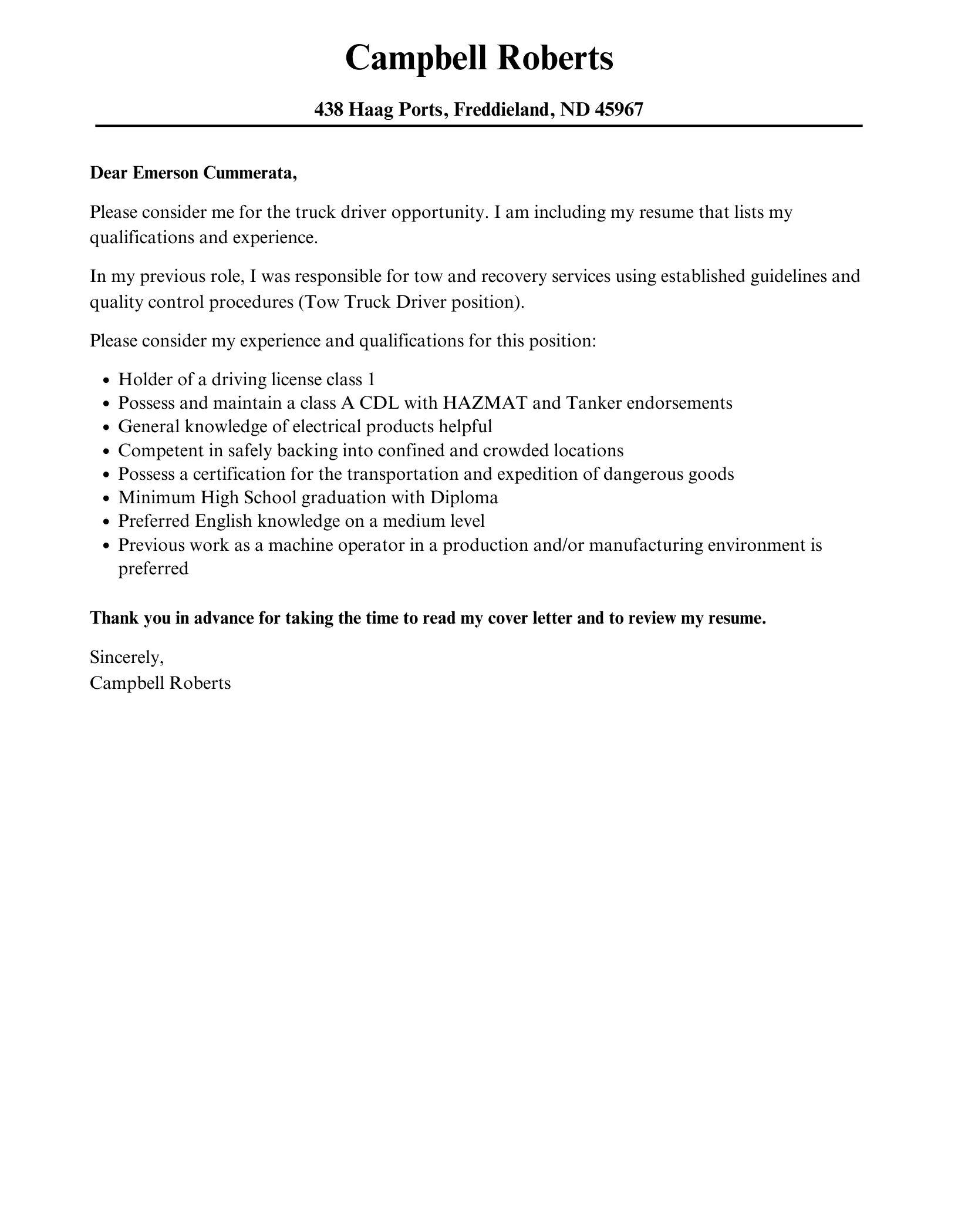
Detail your years of experience as a truck driver, specifying the types of vehicles you’ve operated (e.g., semi-trucks, tankers, flatbeds). Be sure to mention the types of routes you’ve driven (e.g., local, regional, over-the-road) and the geographical areas you’re familiar with. Use specific examples to showcase your expertise, such as safely transporting oversized loads or navigating challenging terrains. Emphasize your experience with different types of equipment and any specialized training you have. This is where you can list the experience you have as a truck driver.
Mentioning Previous Employers and Driving History
List your previous employers, the duration of your employment, and your responsibilities at each company. Highlight any accomplishments or positive feedback you received, such as safety awards or commendations. Briefly discuss your driving history, including any accidents or violations, and how you’ve addressed them. Honesty and transparency are crucial; being upfront about any issues demonstrates accountability. Provide details to support your claims and experiences.
Showcasing Relevant Skills and Qualifications
Highlight skills directly relevant to the job description, such as experience with electronic logging devices (ELDs), load securement, and pre- and post-trip inspections. Include any expertise with specific types of cargo, such as hazardous materials or refrigerated goods. Mention any training or certifications you’ve completed. Focus on skills that align with the job requirements and demonstrate your ability to perform the job effectively. This helps you stand out when applying to a new job.
Safety Certifications and Training
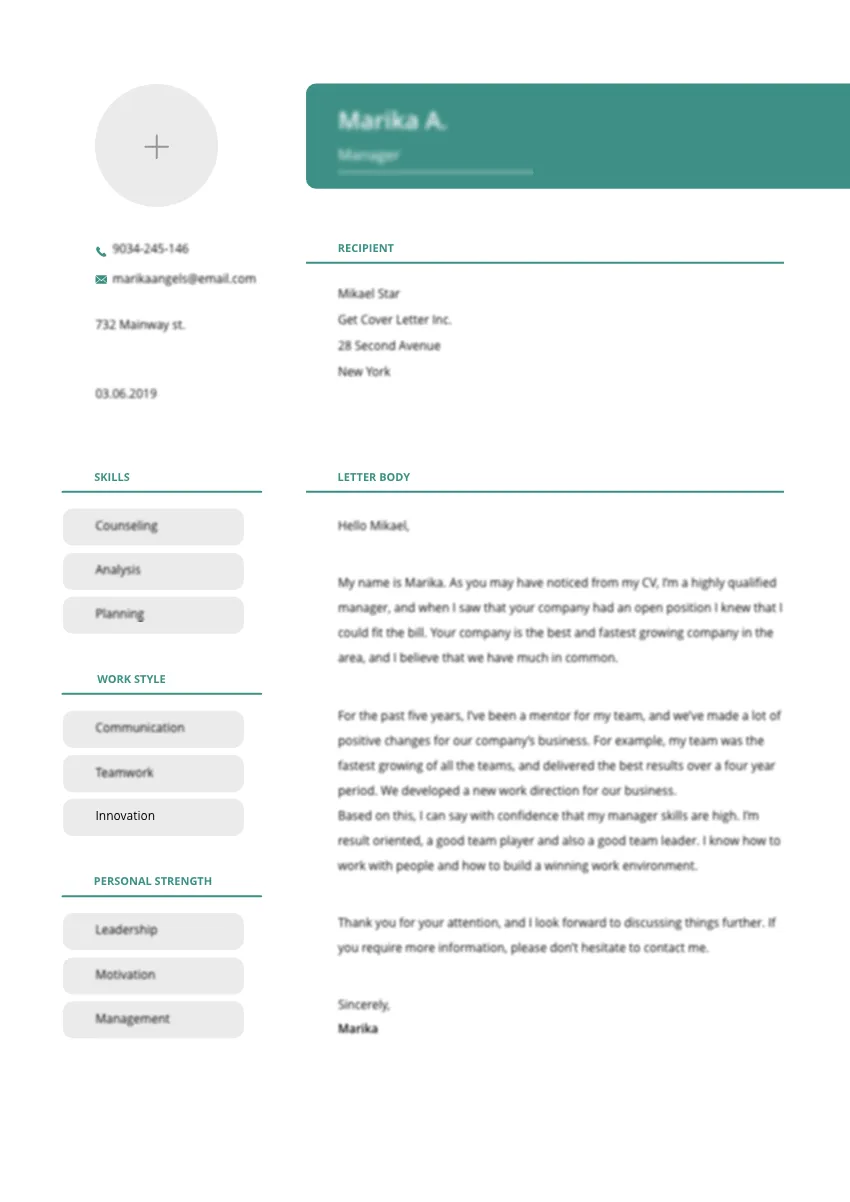
Detail any safety certifications you possess, such as those related to hazardous materials (Hazmat), Transportation Worker Identification Credential (TWIC), or other specialized training. Mention any safety awards or recognition you’ve received. Emphasize your commitment to safety, as this is a critical aspect of truck driving. Demonstrate your understanding of safety regulations and your ability to follow them. Include any defensive driving courses you’ve taken.
Licenses and Endorsements
Clearly state your Commercial Driver’s License (CDL) class and any endorsements you hold, such as tanker, hazmat, or doubles/triples. Ensure your licenses and endorsements are current and valid. Include the state where your CDL was issued and any restrictions that apply. Make sure all licenses are up-to-date; this is essential for any truck driving job. List any other relevant certifications that you may have.
Quantifying Achievements and Experience
Use numbers to quantify your achievements whenever possible. For example, mention the number of miles you’ve driven safely, the percentage by which you improved fuel efficiency, or any cost savings you achieved. Provide specific metrics to demonstrate your performance and contributions. This helps the hiring manager understand the impact you can make. Use metrics to measure your experience as a truck driver.
Detailing Miles Driven and Accidents Prevented
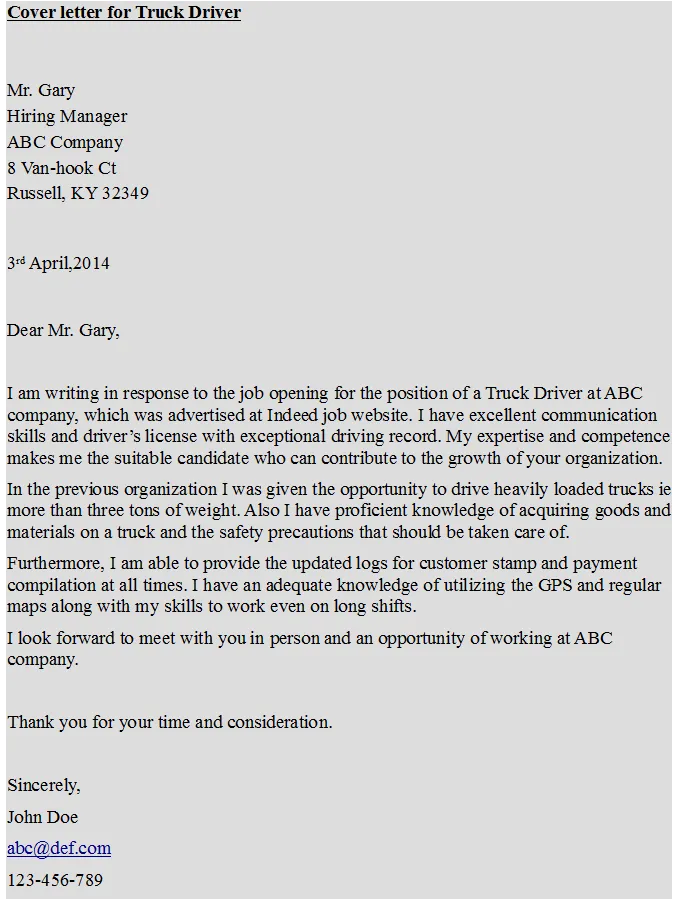
Include the total miles you’ve driven safely, emphasizing your commitment to safe driving practices. Mention any instances where you prevented accidents or incidents. Highlight any awards or recognition for safe driving. Providing these details show your reliability and responsibility. Quantify your safety record with specific numbers.
Adding Personal Qualities and Attributes
Describe personal qualities that make you a good truck driver, such as reliability, responsibility, and a strong work ethic. Mention your ability to work independently, manage your time effectively, and communicate professionally. Highlight any soft skills, like problem-solving and decision-making. This helps the hiring manager understand your personality and how you’ll fit into the company culture.
Demonstrating Reliability and Responsibility
Emphasize your reliability, punctuality, and commitment to meeting deadlines. Provide examples of how you’ve consistently met or exceeded expectations in previous roles. Mention your ability to handle unexpected situations and make sound decisions. Show that you are a dependable individual who can be trusted with important responsibilities. Highlight your skills in time management.
Expressing Enthusiasm for the Role
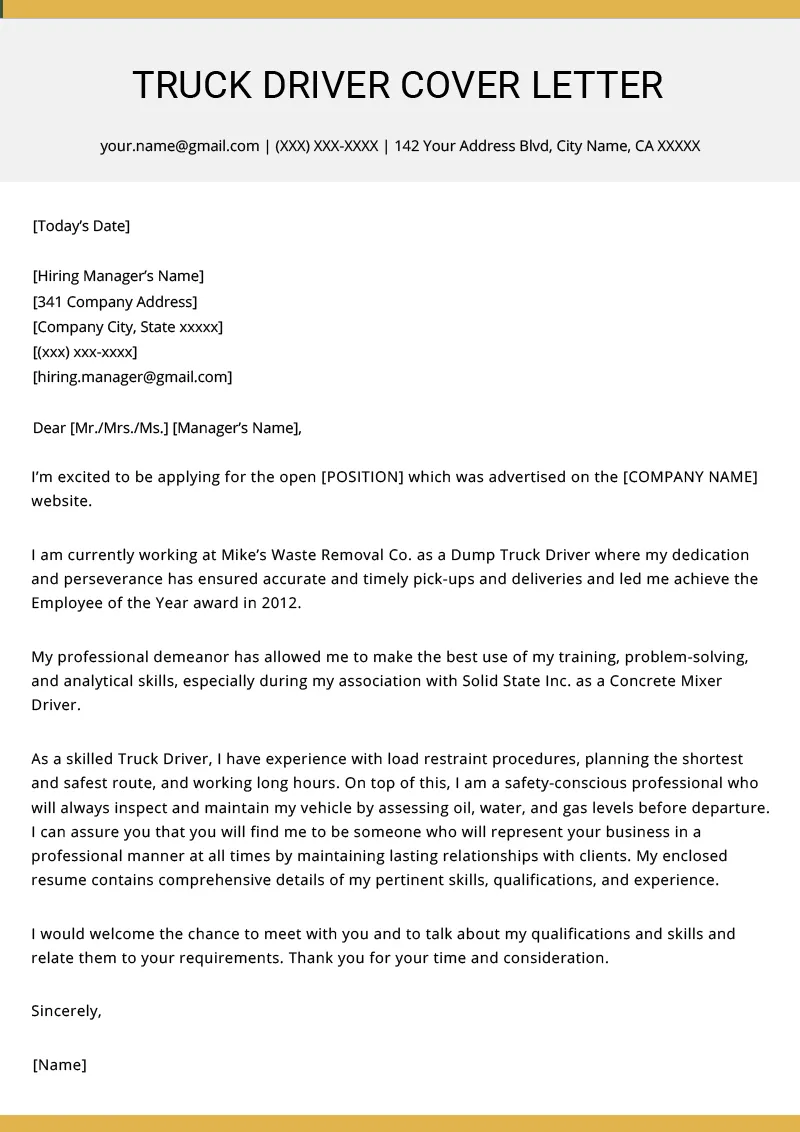
Show your genuine interest in the specific job and the company. Research the company and mention something that appeals to you about their values or mission. Explain why you’re excited about the opportunity and what you hope to achieve. Express your enthusiasm for the role and the trucking industry. Demonstrate that you are excited to be a part of their team. Show your eagerness to contribute to the company’s success.
Writing a Compelling Closing Paragraph
Summarize your key qualifications and reiterate your interest in the position. Thank the hiring manager for their time and consideration. Express your enthusiasm for the opportunity to discuss your application further. End with a confident and professional tone, reiterating your interest in the position. This is your last chance to make a good impression.
Thanking the Hiring Manager
Always thank the hiring manager for their time and consideration. This simple gesture shows respect and professionalism. Express your appreciation for the opportunity to apply and reiterate your interest in the position. Make sure to keep it concise and to the point. Ending with a thank you is a great way to end any cover letter.
Call to Action: Requesting an Interview
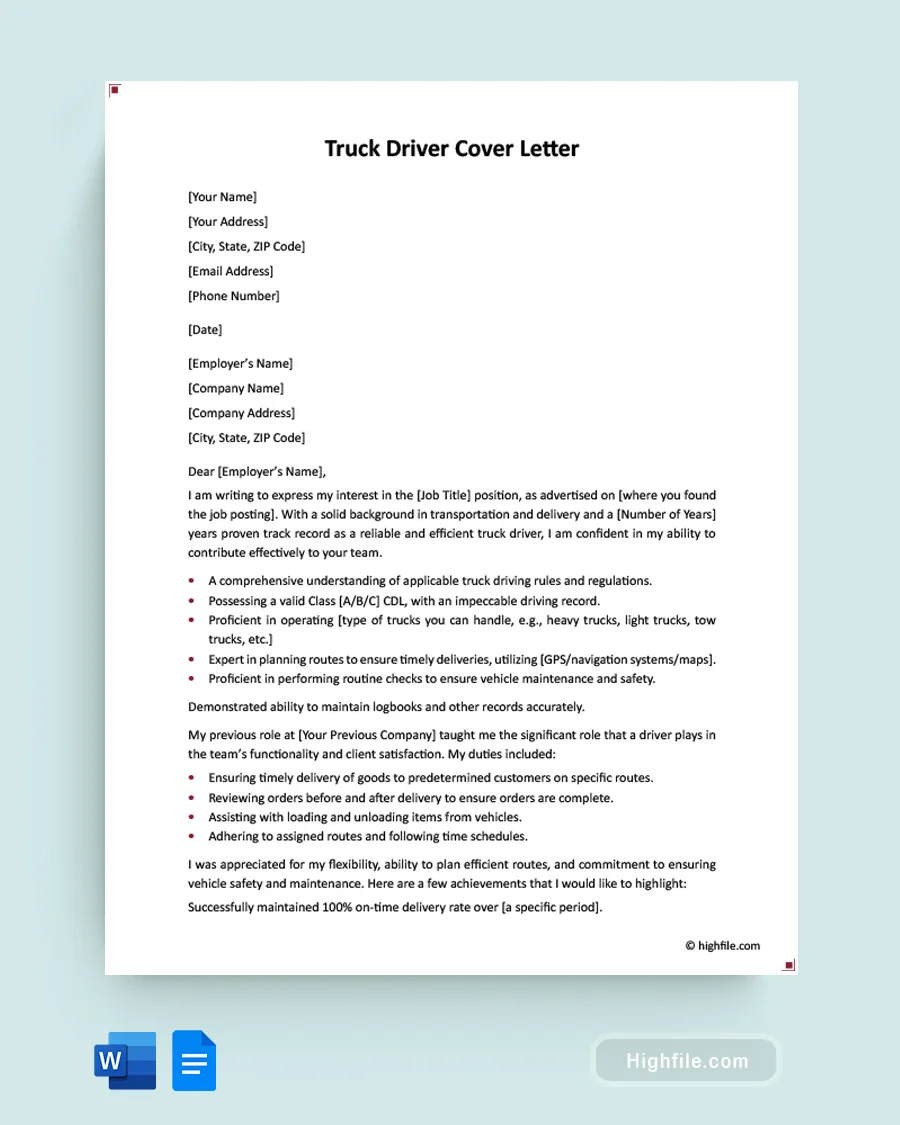
Conclude your cover letter by requesting an interview. Provide your contact information again and express your availability. Make it easy for the hiring manager to contact you and schedule an interview. This shows your proactive approach and willingness to move forward in the hiring process. This step helps you land an interview.
Formatting and Proofreading Your Cover Letter
Choosing the Right Font and Format
Use a professional and easy-to-read font, such as Times New Roman, Arial, or Calibri. Use a standard font size (11 or 12 points). Format your letter with clear headings, bullet points, and ample white space to make it easy to read. Ensure your letter is properly formatted. Use a professional and clean layout that is easy on the eyes. This is a great way to increase your chances.
Proofreading for Errors
Proofread your cover letter carefully for any errors in grammar, spelling, and punctuation. Read it aloud to catch any awkward phrasing or mistakes. Ask a friend or family member to review it as well. Errors can damage your credibility and make a negative impression. A clean cover letter is a must in order to get hired. Make sure everything is perfect before submitting.
Truck Driver Cover Letter Examples and Templates
Examples to Inspire You
Review examples of successful truck driver cover letters to get inspiration. Look for letters that highlight relevant skills, experience, and accomplishments. Analyze how others have effectively communicated their qualifications. Adapt these examples to fit your own experience and the specific job you’re applying for. Use examples to help you write your own cover letter.
Using a Template Effectively
Use cover letter templates as a starting point. Customize the template with your own information and tailor it to the specific job. Do not simply copy and paste; ensure the content reflects your unique qualifications. Tailor the template to the job description. Tailor your letter to match your experience. Make sure it reflects you.
Common Mistakes to Avoid
Generic Cover Letters
Avoid using generic cover letters that are not tailored to the specific job or company. Customize each cover letter to showcase your unique skills and experience relevant to the position. Generic letters show a lack of effort and may lead to your application being overlooked. Show the hiring manager that you took the time to tailor the cover letter.
Typos and Grammatical Errors
Always proofread your cover letter carefully to eliminate typos and grammatical errors. Errors can undermine your credibility and make a negative impression. Use spell-check, grammar-check, and ask someone else to review your letter. A cover letter with no errors is a must. Make sure to read through the cover letter after you finish it.
How to Tailor Your Cover Letter
Researching the Company
Research the company to understand their values, mission, and the specific requirements of the job. Visit their website, read their social media, and look for any news or information about the company. Mentioning the company’s specific needs and requirements shows that you have taken the time to research. Mention the company’s needs and requirements. Customize your cover letter.
Customizing for the Job Description
Carefully read the job description and identify the key skills and qualifications the employer is seeking. Tailor your cover letter to highlight your relevant experience and skills that align with the job requirements. Use keywords from the job description and provide examples of how you’ve demonstrated those skills in the past. This ensures that your cover letter directly addresses the employer’s needs. Make sure your cover letter is customized to the job description.
Final Tips for Truck Driver Cover Letters
Keeping it Concise and Focused
Keep your cover letter concise and to the point, typically one page in length. Focus on the most relevant information and avoid unnecessary details. Make sure your cover letter is easy to read and scan. Respect the hiring manager’s time by providing only the most important information. Make sure your cover letter is easily understood.
Submitting Your Cover Letter
Follow the instructions provided in the job posting for submitting your cover letter. If no specific instructions are given, attach your cover letter and resume in a professional format (e.g., PDF) and send them via email. Ensure that the email address is correct and the subject line is clear. Always double-check everything before submitting your application.
